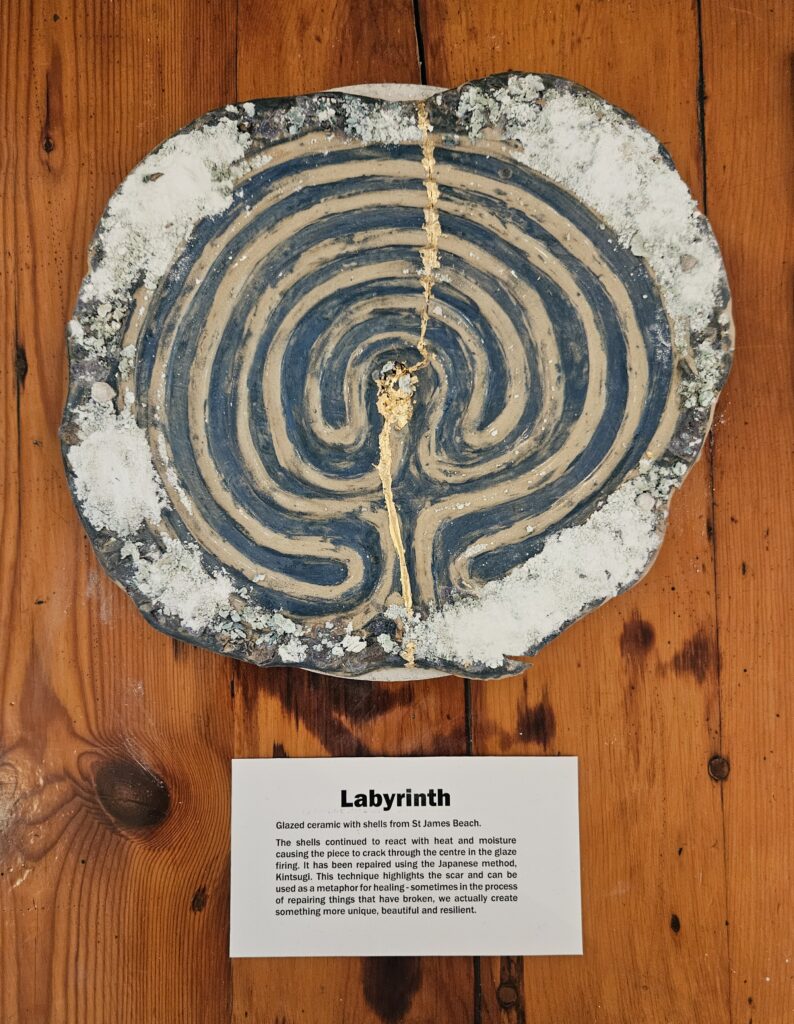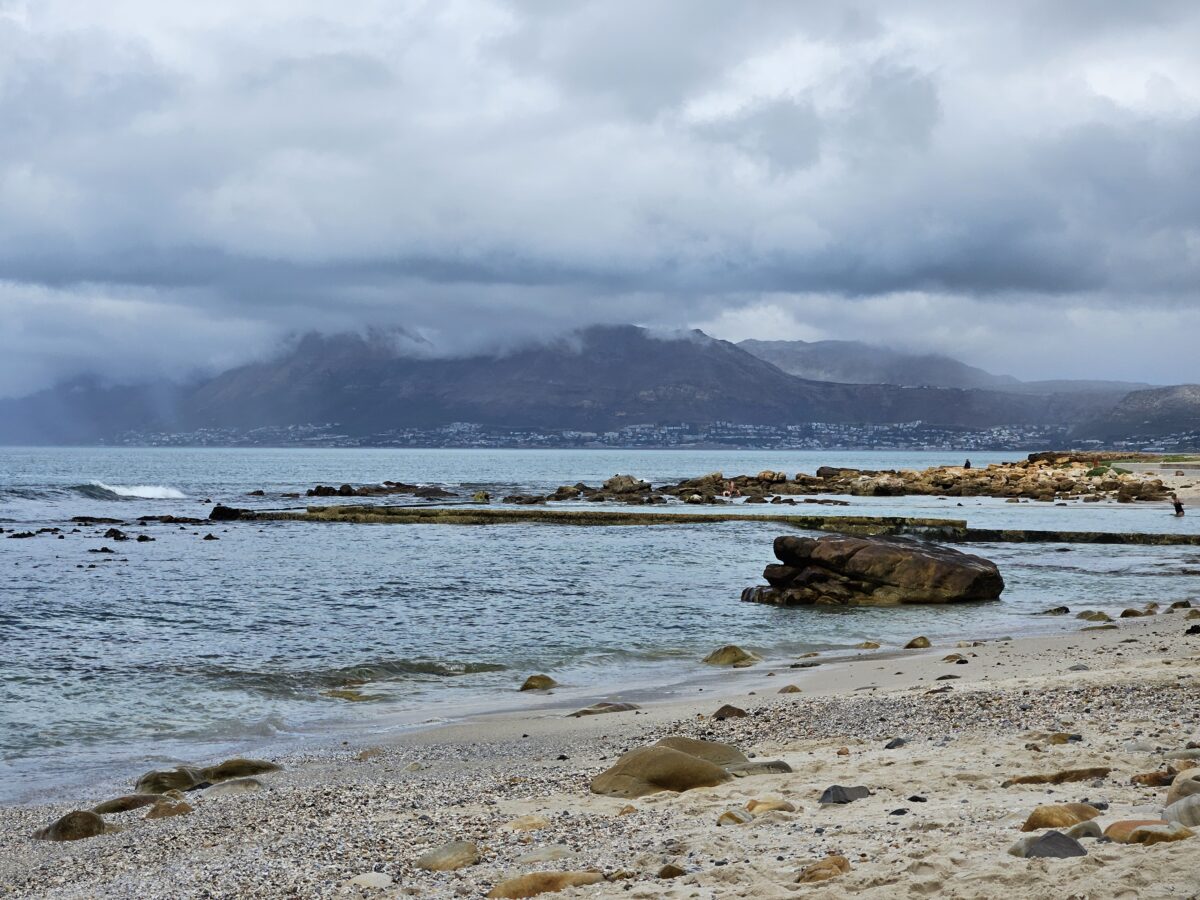This project with the Dept of Environmental and Geographical Science at the University of Cape Town, incorporated a series of three walks – coastal (False Bay), mountain (Silvermine Nature Reserve) and a nightwalk in the forest (Constantia) – that explored the layered relationships of sites within Cape Town through the eyes of artists, academics, writers and activists. Based on the premise that walking and thinking are closely related and using narrative as method, we were encouraged to experience our environment through a more-than-human lens.
Multispecies storytelling looks at how we can use storytelling to reshape our knowledge of our environment, land use and the accompanying history and heritage. The project culminated in a symposium and exhibition at the end of May 2024.
I have been drawn particularly to the stories and connections that have surfaced in relation to St James Beach, stirring up memories of the beach as a space of exclusion during apartheid, while simultaneously unearthing narratives of colonisation, enslavement and loss, community, tradition and spirituality.
Below is the statement that accompanied my exhibition that consisted of a ceramic labyrinth that I made incorporating shells I collected on St James Beach. The shells converted to quick lime after being fired in the kiln. The shells continued to react with heat and moisture causing the piece to crack through the centre in the glaze firing. It has been repaired using the Japanese method, Kintsugi. This technique highlights the scar and can be used as a metaphor for healing – sometimes in the process of repairing things that have broken, we actually create something more unique, beautiful and resilient.
All God’s Beaches for All God’s Children
A walk along St James Beach on the False Bay coast brought back memories of spaces of exclusion, restriction and of violence. The slogan, “All of God’s Beaches for all of God’s Children”, was used during the 1989 Defiance Campaign to desegregate public spaces.
The crushed shells which I collected on the beach inspired me to build a model of a labyrinth in my clay class. Investigation into the exposure of shells to high temperatures in a pottery kiln revealed that they were used in the production of lime, the oldest binding material used in construction.
Lime determined the pace of growth at the Cape Colony under Dutch rule. The supply of shells came from the middens deposited by the indigenous coastal dwellers who lived in this area for thousands of years. So prolific was the production of lime in this area that it gave the name Kalkbaai, or Lime Bay, to the fishing village now known as Kalk Bay. [A lime kiln was built here in 1673.]
St James Beach was named after St James Catholic Church which was built to serve the Filipino community of Kalk Bay. St James is the patron saint of Spain and of fishermen and is represented by the scallop shell. St James is the patron saint of Spain and of fishermen (the Filipinos were skilled fishermen and Spanish-speaking). In Spain St James is known as Santiago and the pilgrimage route across Europe that ends at the place where he is buried is associated with the scallop shell. This links to the labyrinth which is symbolic of a pilgrimage.

Featured Image: St James Beach, Cape Town. March 2024.
